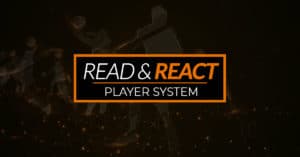Every athletic contest boils down to “who is going to force who to play who’s game?” But I think using the word FORCE is misleading. Here’s what I mean:
When your opponent is bigger and more physical than you, meaning, if you play that type of game, you’re going to lose, then you need to be able to change your offense to one that searches and hunts for non-physical scoring opportunities: Spread the floor, stay away from screens, and take advantage of spacing.
When your opponent is quicker and faster than you, then change your offense to a style that has as much screening in it as possible – in other words, if you’re making contact with the defenders, it slows them down, it has a tendency to equalize your lack of quickness with their foot-speed.
This can be done with both set plays and the Read & React. But most traditional coaches don’t look at their set plays through this lens.
The traditional coach could create categories for their Set Plays like this:
- BLUE plays have no screens – they have lots of spacing and turn everything into a contest of foot-speed and quickness. So, Blue 1, Blue 2, and Blue 3 are three plays that fit these criteria.
- RED plays have as many screens as possible in them.
- This could go on – GREEN plays go inside – post play, etc!
Run Blue plays against big physical teams. Run Red plays against teams that are quicker and faster. Run Green plays when you have an advantage inside.
On the other hand, if you’re using Read & React – its as simple as emphasizing only Layers 1-6 against physical teams and majoring in Layers 7-15 against quicker teams. Layers 1-6 control spacing without screens while Layers 7-15 are all about screens. No memorizing set plays – just understand who you’re playing against.
Now, if your opponents are bigger, more physical, AND quicker and faster than your team, then…you need to reschedule!







